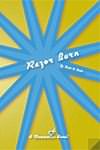
|
By Scott&Scott We dreamed of getting a mainstream New York publishing house to publish our line of romance novels for gay men. Just 90 days later, we achieved our goal. Based on our successful experience, here are suggestions for how to get published in 90 days. Consider POD Publication. Print-on-demand (POD) publication can give you a finished product that stands out from the slew of plain manuscripts on an agentís or editorís crowded desk. It also may allow you to pitch a publisher or agent based on actual ongoing sales (via your own Web site and/or Amazon). The downside is the cost and quality. Expect to pay a minimum of $300-400 to format your book (no frills); and be limited in cover design. You will also have typos, unless you are a copyeditor. Donít make your POD decision solely on price. Two key considerations: distribution on Amazon and the ability to customize your cover design. For a great Web site comparing the various POD publishers, try http://www.booksandtales.com/pod/. Caution: POD is not for everyone. A mainstream novel targeted at a general audience is unlikely to reap the benefits of POD. But if you target a niche market, POD can help. The narrower the niche, the better. In our case, we were writing romance novels for gay men. We targeted a specific narrow niche: not just men; not just gay men; but gay men who believe in happily ever after and want to read about it. If these qualifications (a definable niche) and restrictions (price/quality) rule out your manuscript, POD may not be for you. Get a Web Site. Web communication is essential to modern marketing, whether your product is a book or a widget. Web sites act partly like a business card and partly like a book cover. They attract interest, supply information and provide a way of communicating with media, fans, potential agents and prospective publishers. For a sample, see http://www.romentics.com . A google search can provide thousands of Web hosting services at reasonable fees. Many of them provide templates for web design (avoiding the quality issues with print media). Many will do a simple design for a fee. The number of unique visitors to your site (which our web host tracks for us) can be used to demonstrate to a potential publisher the high level of interest in your book. Get a Brand. A brand shows book professionals that you have
given thought to how to distinguish your book in a crowded
marketplace. In the world of books and authors, such thought is
relatively rare.
Trade Favors. Nothing we did -- except the writing -- was done alone. We enlisted amateur photographer friends to take photos for our Web site and book covers. In return, we plied them with cocktails and rewrote resumes for them and gave prominent mentions on our inside cover page. We enlisted Web and graphic designers with a weakness for electronic devices. In addition to the iPod we gave each of them, they now use our Web site, our book covers, our logo, and our online ads in their own freelance portfolio. Spend on a Quality Cover (if marketing through bookstores). Our covers are simple four-color designs. These are adequate for Internet sales and they support our brand identity. But the moment our books got to a distributor, we heard in no uncertain terms from booksellers that our covers needed significant improvement. The money spent on a cover will be well worth it. Consult with your POD publisher and enlist friends! Leave Bookmarks Behind. A significant element of our Web site
design is a bookmark motif, with a folded corner as if to mark a
page on each screen. We complemented this motif with actual
bookmarks, too, using the consistent Romentics design elements and
our contact information. Your bookmarks -- with your brandís
consistent coloration and design -- should be your calling cards.
Carry a supply everywhere you go. Take them with you on vacation and
leave them in conspicuous places when you depart. Insert a bookmark
in every mailing as a constant reminder. Search the Web for
printers, ask your local copy and print store, and check http://www.gfxinc.com/bookmark_printing.html.
Do Google. Especially if you are in a niche market, Google (or other search engines) will connect you with sites specializing in your niche. Google can yield many directories of media covering your niche market. (Try googling "media" and "directory" and "[your niche]".) Google led us to services providing free Web-based fax capability (http://www.fax2mail.com) so we could put out our key press releases at zero cost. Drive Web Traffic. Companies like Google and Overture (Yahoo! and others) also provide a relatively low-cost advertising vehicle that users can click to get to your Web site. With "pay for performance" ads, you can control how much you spend a month. We budget about $100 for Google a month, and about half our approximately 3,000 unique visitors a month come through search engines. We found search engine ads far superior to online banner ads in our first 90 days in value and clicks. Focus Your Press. Nothing beats free press for driving Web traffic. But you donít need a New York Times book review to achieve your goal. When you begin, target niche (Web and specialty pubs) and local publications through Google. Be persistent. Send the link to your site. Explain why your book is worth a story. Getting that first story is the hard part. Once you have the first story in hand, send it to a wider array of publications. The media likes a bandwagon and once someone else covers a story, the others will climb aboard. Focus on Fans. Even if you sell a single POD book, you have a
fan. And your Web site and bookmarks give potential fans a way to
contact you. Find a way to communicate with them. E-mail them. Use
their ideas and foster a relationship. Use their enthusiasm to
attract agents and editors and tease the media. One of our fans
contributed great quotes to the Boston Globe and got her entire book
club reading our novels.
Build a Marketing Portfolio. Collect every news clipping, however obscure, and every book review, and every newsletter, and every advertisement you do. Even the book marks themselves should be part of this package. This portfolio -- the real life proof of your bookís ability to generate a buzz -- is what you will send to agents and editors (and ultimately what editors will use to convince the money men to back your book and set your advance). The key is to hand agents and editors a complete, finished product of which your book is just one component of an integrated whole (portfolio, brand, etc.). Pinpoint Your Agent Search. Use the many resources that tell you how to get an agent. (We like "The Practical Writer" published by Poets & Writers Magazine.) Consult directories that explain what subject matters and genres an agent will consider. If you have a niche, make sure your target agents handle it. Call them if you cannot tell. Donít waste a romance proposal on an agent that handles only non-fiction. We sent out letters to twenty agents and got three positive responses. (We were willing to send out another fifty letters if necessary.) Arm Your Agent with Your Marketing Portfolio. The agent we eventually signed with said that what caught her eye was the completeness and professionalism of our marketing materials and our (rare) willingness to do the marketing side of the business as well as the writing. She said she had a hunch that publishing houses would see those attributes as well. She was right! Our agent reproduced our marketing portfolio and sent it with actual copies of our POD books to various mainstream publishing houses. Interest was immediate. Within six weeks, we had three publishing houses seriously considering acquiring one of our books, and we eventually signed with Warner Books. They are publishing our first Romentics novel in June, 2005, and we are now negotiating Warnerís publication of the other books in the line (with continued marketing, branding, communications and hard work). Celebrate your success. And publicize it, using the same
tools you used to get the contract in the first place. Once you hit
success, start at the top of the list again! Though the message may
change, you never stop pitching the brand. Good
luck! |
 | ||||||||||||



